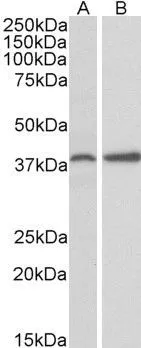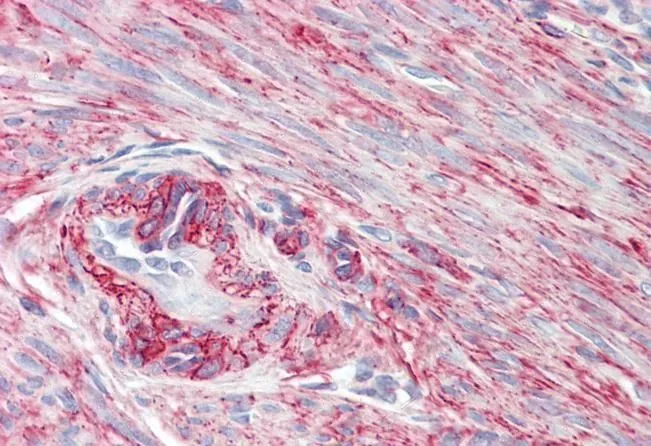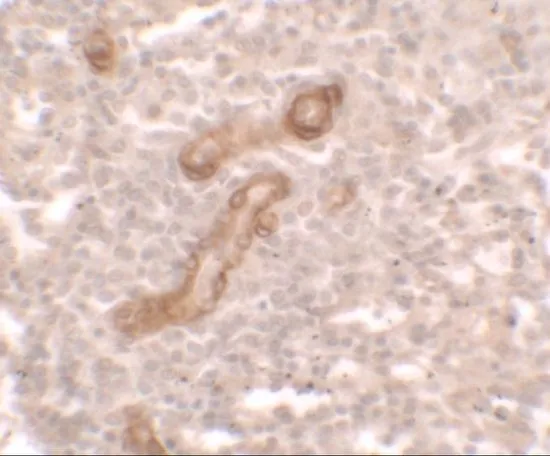
WB analysis of human adipose cell llysate using GTX88367 PRKCDBP antibody, Internal. Dilution : 0.1microg/ml Loading : 35microg protein in RIPA buffer
PRKCDBP antibody, Internal
GTX88367
ApplicationsWestern Blot, ImmunoHistoChemistry, ImmunoHistoChemistry Paraffin
Product group Antibodies
TargetCAVIN3
Overview
- SupplierGeneTex
- Product NamePRKCDBP antibody, Internal
- Delivery Days Customer9
- Application Supplier NoteWB: 0.1-1microg/ml. IHC-P: 3.75microg/ml. *Optimal dilutions/concentrations should be determined by the researcher.Not tested in other applications.
- ApplicationsWestern Blot, ImmunoHistoChemistry, ImmunoHistoChemistry Paraffin
- CertificationResearch Use Only
- ClonalityPolyclonal
- Concentration0.50 mg/ml
- ConjugateUnconjugated
- Gene ID112464
- Target nameCAVIN3
- Target descriptioncaveolae associated protein 3
- Target synonymscaveolae-associated protein 3; cavin-3; HSRBC; PRKCDBP; protein kinase C delta binding protein; sdr-related gene product that binds to c-kinase; serum deprivation response factor-related gene product that binds to C-kinase; SRBC
- HostGoat
- IsotypeIgG
- Protein IDQ969G5
- Protein NameCaveolae-associated protein 3
- Scientific DescriptionThe protein encoded by this gene was identified as a binding protein of the protein kinase C, delta (PRKCD). The expression of this gene in cultured cell lines is strongly induced by serum starvation. The expression of this protein was found to be down-regulated in various cancer cell lines, suggesting the possible tumor suppressor function of this protein. [provided by RefSeq, Jul 2008]
- Storage Instruction-20°C or -80°C,2°C to 8°C
- UNSPSC12352203








